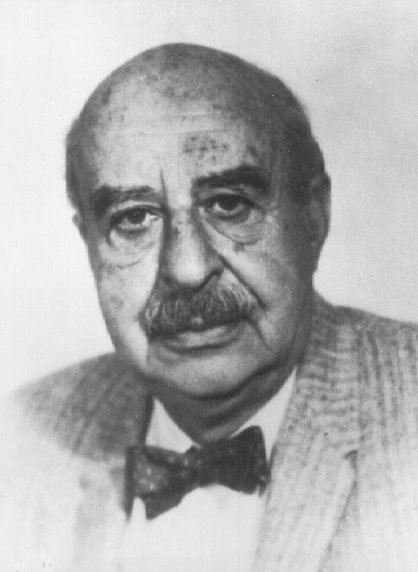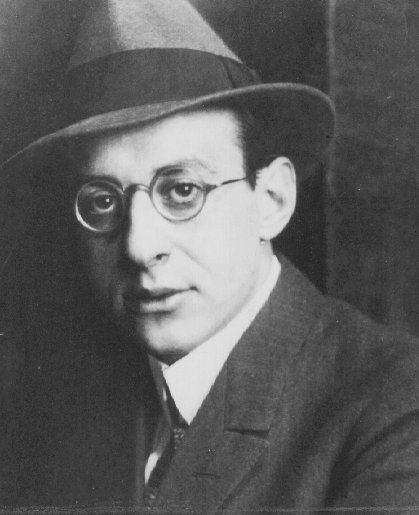Name Fritz Perls Role Psychiatrist | ||
 | ||
Occupation Psychiatrist and psychotherapist Known for Coining term: Gestalt Therapy Education Humboldt University of Berlin Books In and Out the Garbage, Gestalt Therapy Verbatim, The gestalt approach & Eye witne, Gestalt Therapy: Exciteme, Ego - hunger - and aggr Similar People Laura Perls, Paul Goodman, Ralph Hefferline, Eric Berne, Abraham Maslow | ||
Parents Nathan Perls, Amelia Rund | ||
Fritz perls video
Friedrich (Frederick) Salomon Perls (July 8, 1893 – March 14, 1970), better known as Fritz Perls, was a noted German-born psychiatrist and psychotherapist. Perls coined the term 'Gestalt therapy' to identify the form of psychotherapy that he developed with his wife, Laura Perls, in the 1940s and 1950s. Perls became associated with the Esalen Institute in 1964, and he lived there until 1969. His approach to psychotherapy is related to, but not identical to, Gestalt psychology, and it is different from Gestalt theoretical psychotherapy.
Contents
- Fritz perls video
- Fritz Perls explains Gestalt Therapy Fritz Perls explica Terapia Gestalt
- Life
- Criticism
- References

The core of the Gestalt Therapy process is enhanced awareness of sensation, perception, bodily feelings, emotion, and behavior, in the present moment. Relationship is emphasized, along with contact between the self, its environment, and the other.
Fritz Perls explains Gestalt Therapy ¦ Fritz Perls explica Terapia Gestalt
Life
Fritz Perls was born in Berlin, Germany, in 1893. Perls grew up on the bohemian scene in Berlin, participated in Expressionism and Dadaism, and experienced the turning of the artistic avant-garde toward the revolutionary left. Deployment to the front line, the trauma of war, anti-Semitism, intimidation, escape, and the Holocaust are further key sources of biographical influence.
He was expected to practice law, following his distinguished uncle Herman Staub, but instead he studied medicine. Perls joined the German Army during World War I, and spent time in the trenches. After the war in 1918 he returned to his medical studies graduating two years later, specializing in neuropsychiatry as a medical doctor, and then became an assistant to Kurt Goldstein, who worked with brain injured soldiers. Perls gravitated toward psychoanalysis.
In 1927 Fritz Perls became a member of Wilhelm Reich's technical seminars in Vienna. Reich's concept of character analysis influenced Perls to a large extent. And in 1930 Reich became Perls' supervising senior analyst in Berlin.
In 1930 Fritz Perls married Laura Perls (born, Lore Posner), and they had two children together, Renate and Stephen. In 1933, soon after the Hitler regime came to power, being of Jewish descent, and because of their antifascist political activities in the time before, Fritz Perls, Laura, and their eldest child Renate fled to the Netherlands, and one year later they emigrated to South Africa, where Fritz Perls started a psychoanalytic training institute. In 1936 he had a brief and unsatisfactory meeting with Freud.
In 1942 Fritz Perls joined the South African army, and he served as an army psychiatrist with the rank of captain until 1946. While in South Africa, Perls was influenced by the "holism" of Jan Smuts. During this period Fritz Perls wrote his first book, Ego, Hunger, and Aggression (published in 1942 and re-published in 1947). Laura Perls wrote two chapters of the book, although when it was re-published in the United States she was not given any recognition for her work.
Fritz and Laura Perls left South Africa in 1946 and ended up in New York City, where Fritz Perls worked briefly with Karen Horney, and Wilhelm Reich. After living through a peripatetic episode, during which he lived in Montreal and served as a cruise ship psychiatrist, Perls finally settled in Manhattan. Perls wrote his second book with the assistance of New York intellectual and author, Paul Goodman, who drafted the theoretical second part of the book based upon Perls' hand-written notes. Perls and Goodman were influenced by the work of Kurt Lewin and Otto Rank. Along with the experiential first part, written with Ralph Hefferline, the book was entitled Gestalt Therapy and published in 1951.
Thereafter, Fritz and Laura Perls started the first Gestalt Institute in their Manhattan apartment. Fritz Perls began traveling throughout the United States in order to conduct Gestalt workshops and training.
In 1960 Fritz Perls left Laura Perls behind in Manhattan and moved to Los Angeles, where he practiced in conjunction with Jim Simkin. He started to offer workshops at Esalen Institute in Big Sur, California, in 1963. Perls became interested in Zen during this period, and incorporated the idea of mini-satori (a brief awakening) into his practice. He also traveled to Japan, where he stayed in a Zen monastery.
Eventually, he settled at Esalen, and even built a house on the grounds. One of his students at Esalen was Dick Price, who developed Gestalt Practice, based in large part upon what he learned from Perls. At Esalen, Perls collaborated with Ida Rolf, founder of Rolfing Structural Integration, to address the relationship between the mind and the body.
Perls has been widely cited outside the realm of psychotherapy for a quotation often described as the "Gestalt prayer":
I do my thing and you do your thing.
I am not in this world to live up to your expectations,
and you are not in this world to live up to mine.
You are you, and I am I,
and if by chance we find each other, it's beautiful.
If not, it can't be helped.
In 1969 Perls left Esalen and started a Gestalt community at Lake Cowichan on Vancouver Island, Canada.
Fritz Perls died of heart failure in Chicago, on March 14, 1970, after heart surgery at the Louis A. Weiss Memorial Hospital.
Criticism
Perls' approach to therapy has been strongly criticised by Jeffrey Masson. Masson allows Perls' words to speak for themselves, quoting from his autobiography, In and Out the Garbage Pail, to show that Perls was sexist and abusive. For example:
"I got her down again and said, gasping: 'I've beaten up more than one bitch in my life.' Then she got up, threw her arms around me: 'Fritz, I love you.' Apparently she finally got what, all her life, she was asking for, and there are thousands of women like her in the States. Provoking and tantalizing, bitching, irritating their husbands and never getting their spanking. You don't have to be a Parisian prostitute to need that so as to respect your man."
